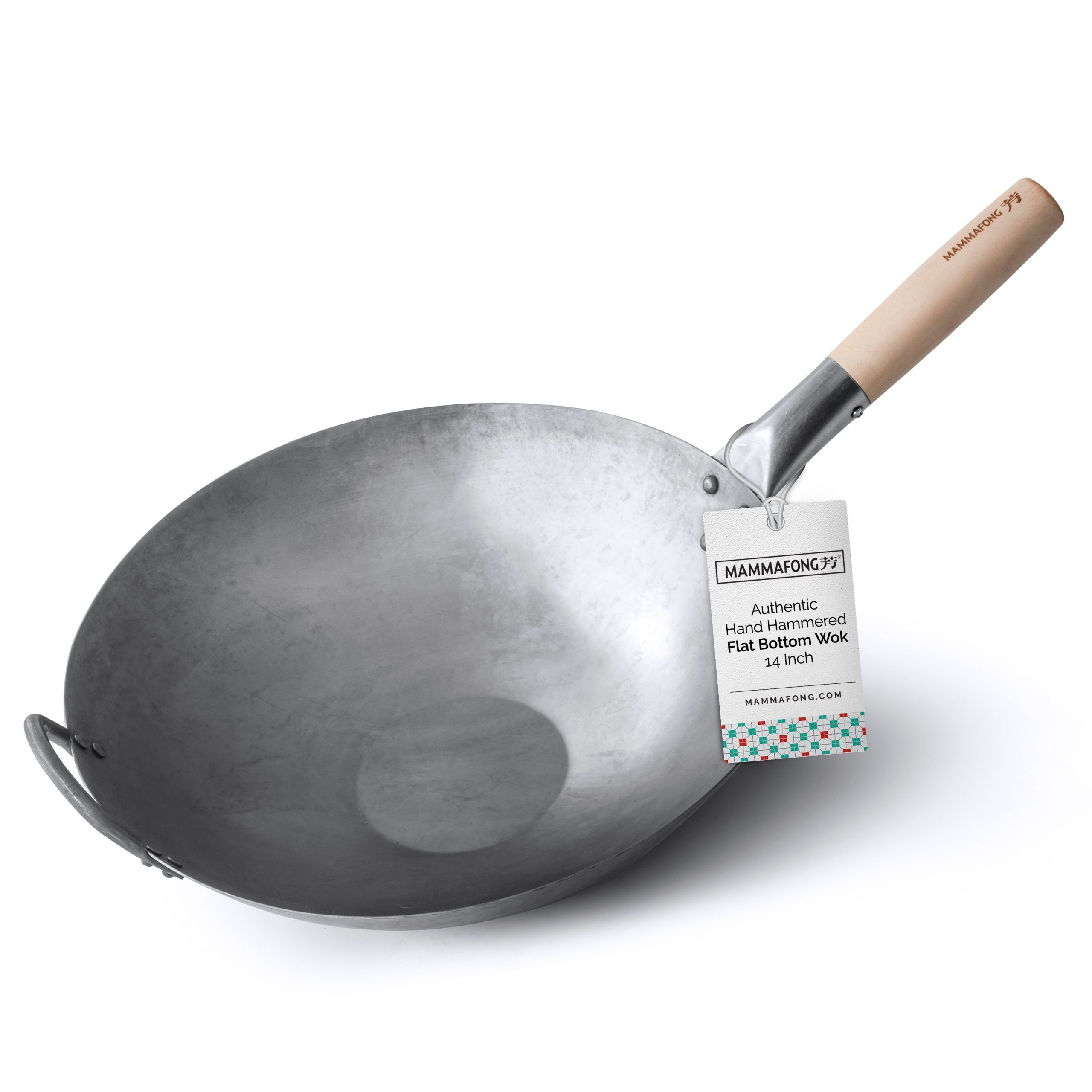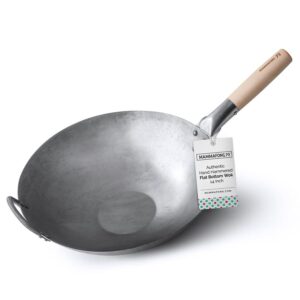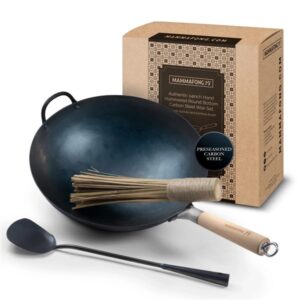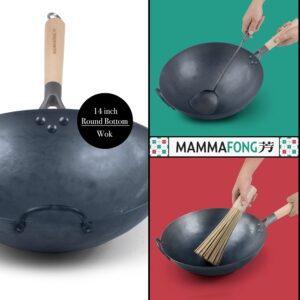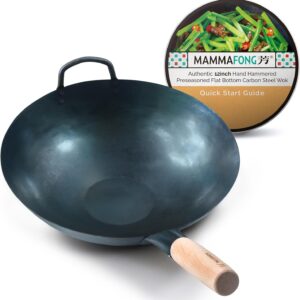How to choose a wok?
A guide for wok types
Woks are truly versatile utensils in the kitchen with 2000 years of history behid them.
But, as with most things, not all woks are created equal. Woks come in many different versions that differ in sizes, shapes, metals, and handle arrangements. Here’s a quick guide how to pick the right one.
Wok Materials
Stainless steel woks: We strongly advice to avoid. They are extremely heavy and difficult to handle, they also take a long time to heat up and cool down. So they simply loose on a stir fry where you would need rapid heat adjustments. And also food stick to steel.
Cast iron: Better choice but not the best. It still takes a relatively long time to heat up and cool down, but it offers a better nonstick surface. The main problem with cast iron is that when it’s too thin, it is extremely fragile but when it’s when made thick enough to be durable, they are very heavy to lift, so no way you could do proper flipping during a stir-fry.
Carbon steel is your best bet. It heats quickly and evenly; it’s highly responsive to heat, it’s durable and you get very good value for your money. When properly cared for, it will end up with a practically nonstick surface. Look for carbon steel woks that are at least 14-gauge—about two millimeters thick. Which won’t bend when you press on the sides.
Teflon and other nonstick woks: Avoid at all costs. Most nonstick coatings cannot handle the high heat necessary for a proper stir-fry. They start vaporizing, releasing noxious fumes long before they reach the requisite temperature. They make browning difficult, and it’s impossible to get food to stick in place against the wok when you want to clear a surface to cook in the middle.
How Woks Are Made
Woks are made in three ways. Traditional hand-hammered woks are an excellent choice. The slight indentations left by the hammering pattern allow you to push cooked food to the sides of the pan, while adding ingredients to the center without them slipping.
Stamped woks are made by cutting out a circular piece of thin carbon steel and machine-pressing it into a mold. They are extremely cheap but completely smooth, which makes it difficult to stir-fry in them properly. They are, without fail, made from low-gauge steel and prone to developing hot and cold spots as well as feeling flimsy.
Spun woks are produced on a lathe, giving them a distinct pattern of concentric circles. This pattern offers the same advantages as a hand-hammered wok, allowing you to easily keep your food in place against the side of the pan.
Wok shapes: Flat or Round bottom?
There are 2 types of shape: round bottom and flat bottom woks.
Traditional woks have a deep bowl shape designed to fit into a circular opening directly over the hearth. Round bottom won’t work on an electric range. You can use them on gas stove with a helper ring.
Woks with bottoms that are too flat defeat the purpose of a wok, making it tough to flip properly and to move food in and out of the high-heat zone.
Your best bet is a wok with a four- to five-inch flattened area at the bottom, with gently sloping sides that flare out to between 12 and 14 inches. This will give you plenty of high-heat space for searing meats and vegetables at the bottom, while still providing ample volume and room to maneuver when flipping.
As for handles, you have two choices. Cantonese-style woks have a small handle on either side, while Northern-style woks have a single long handle, and usually a smaller helper handle on the opposite side. The latter is the type of wok you want. The large handle facilitates flipping and stir-frying, while the short helper handle makes it easy to lift.
Choose a Wok With a Lid
Why choose a wok with a lid? Because a wok with a lid will make your life a lot easier especially when you cook Chinese food. A lot of time the ingredients need to simmer and be covered during cooking. So if you purchase a wok with a lid this will make cooking food with a wok much easier.
